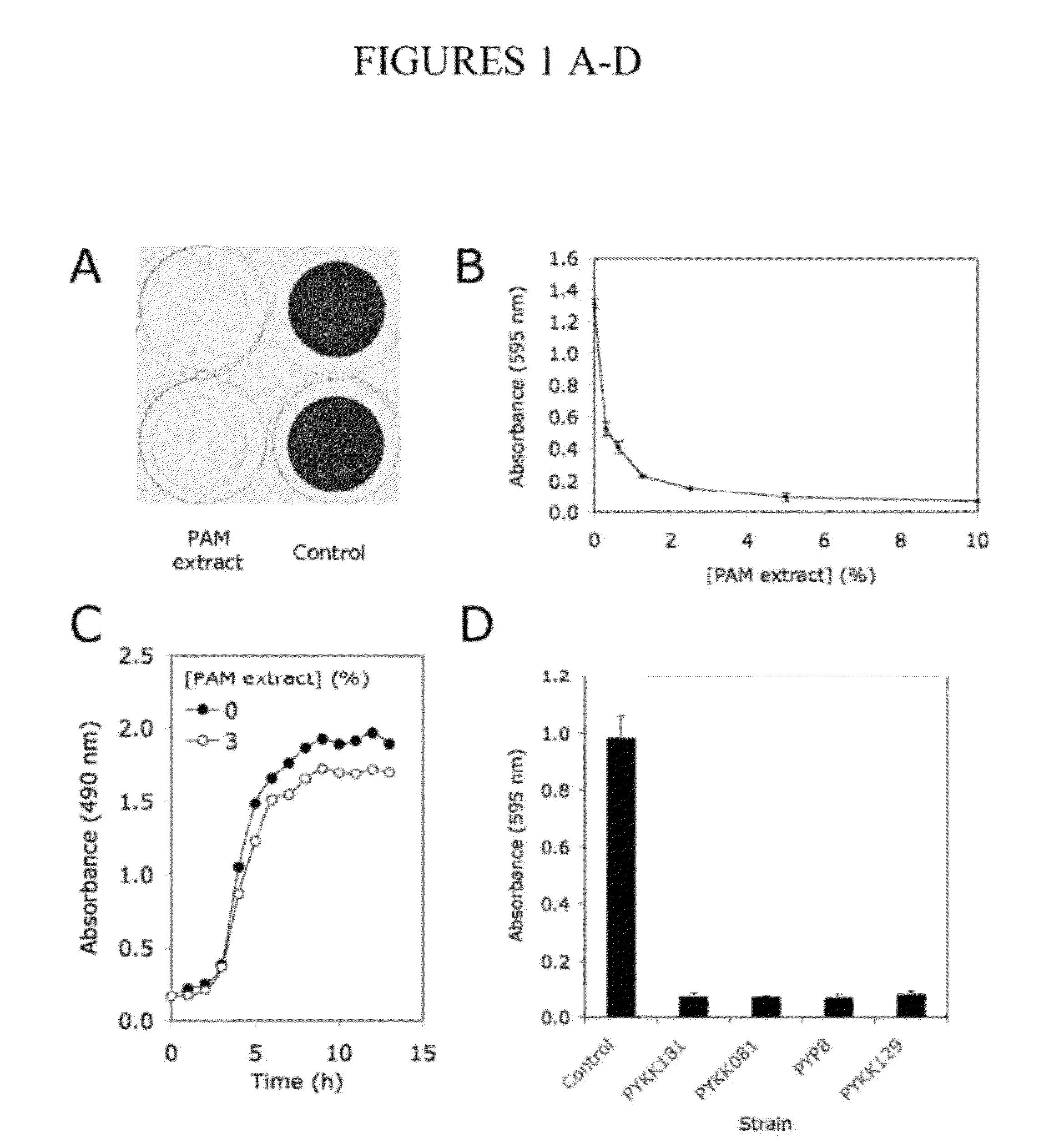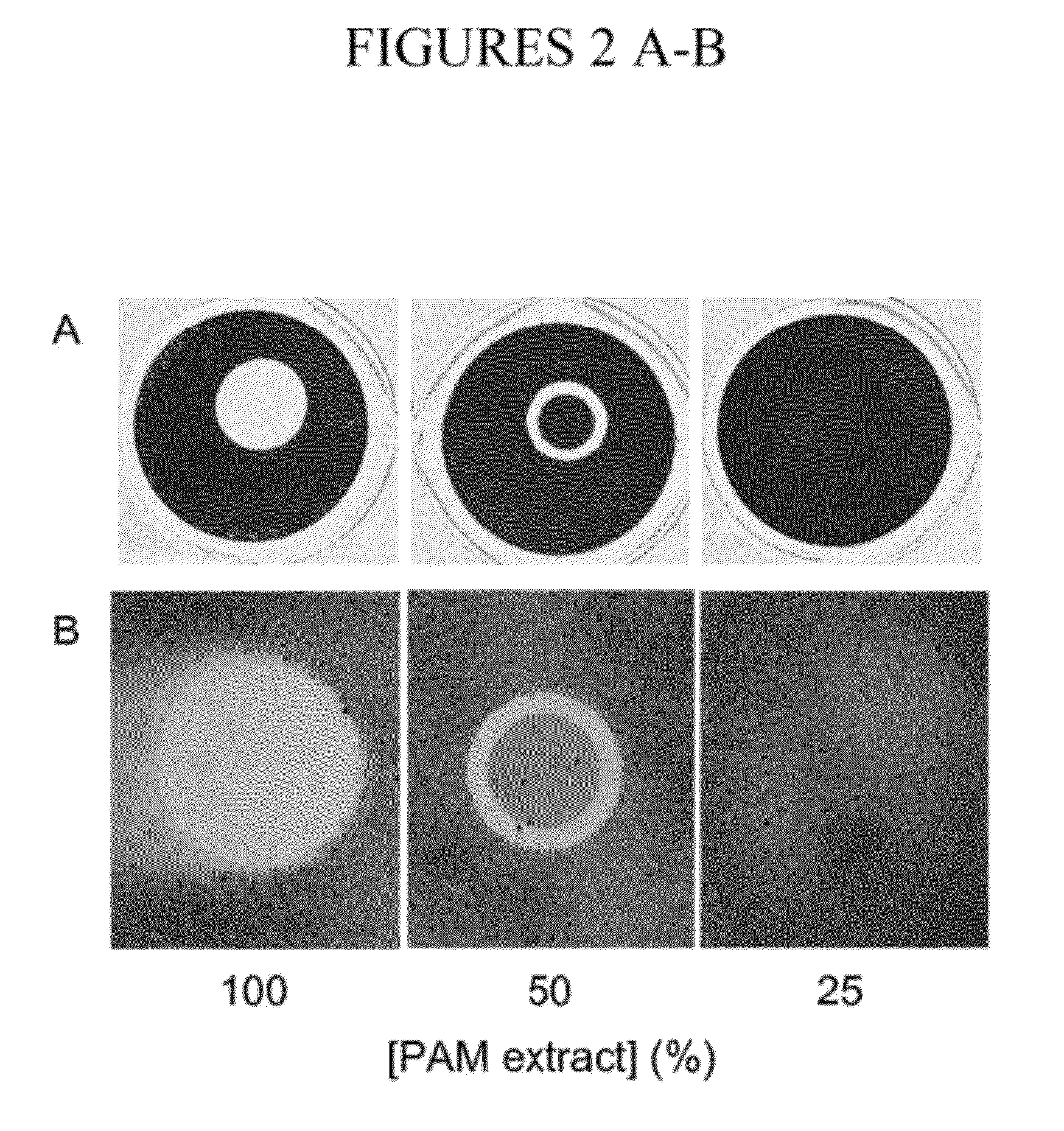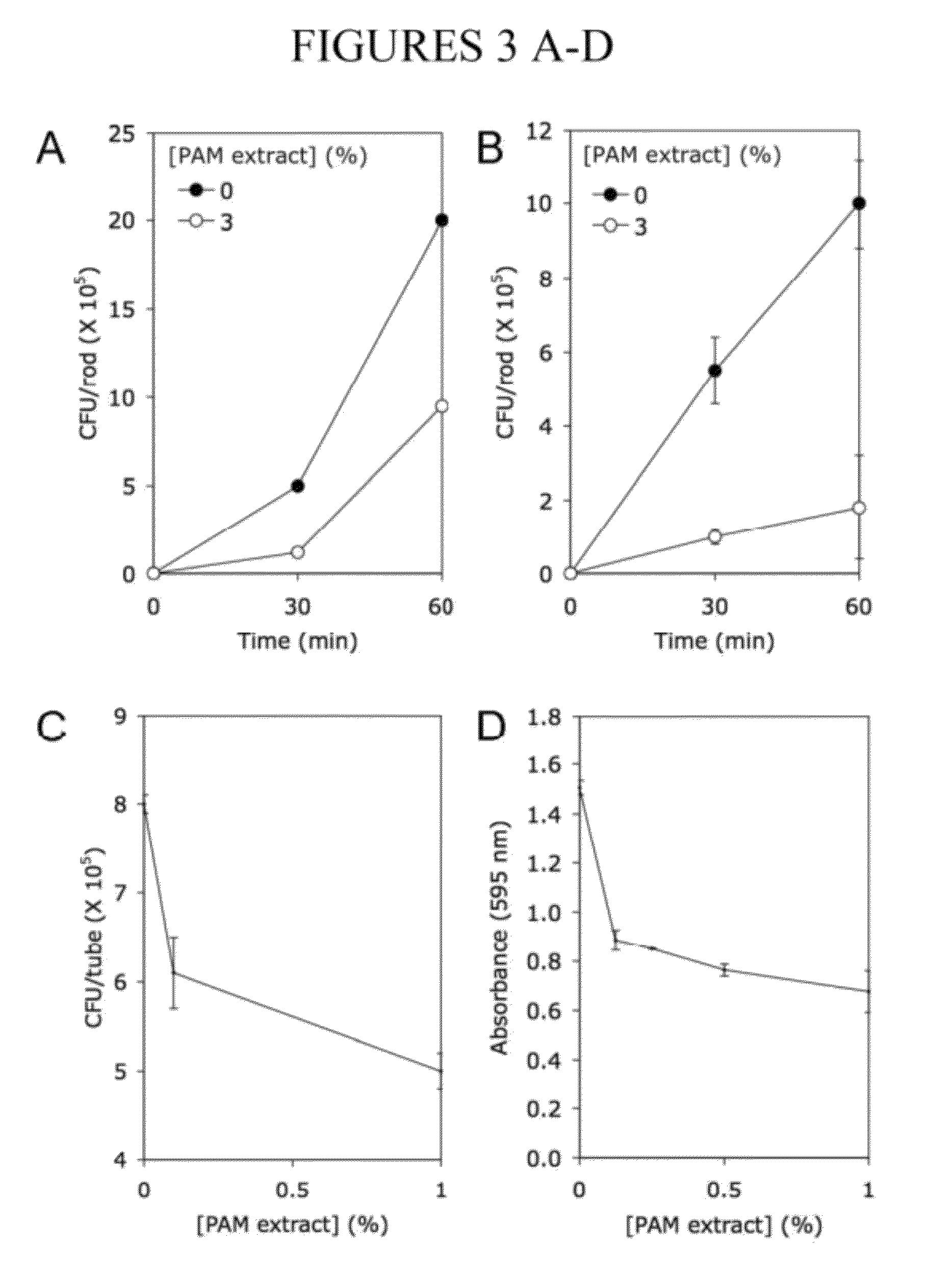Biofilm inhibiting composition
a technology of composition and biofilm, applied in the field of biofilm inhibiting composition, can solve the problems of life-threatening systemic infections, device malfunction, corrosion and biofouling of industrial equipment,
- Summary
- Abstract
- Description
- Claims
- Application Information
AI Technical Summary
Benefits of technology
Problems solved by technology
Method used
Image
Examples
example 1
Materials and Methods
[0088]Strains and culture conditions. The strains used in this study were K. kingae PYKK081, PYKK181, PYP8 and PYKK129 (Kehl-Fie 2010, Infect. Immun. 78:1692-1699); S. aureus SH1000 (Horsburgh 2002, J. Bacteriol. 184:5457-5467); S. aureus Xen29 (Xiong 2005, Antimicrob. Agents Chemother. 49:380-387); S. epidermidis NJ9709 (Kaplan 2004, Antimicrob. Agents Chemother. 48:2633-2636); Aggregatibacter actinomycetemcomilans CU 1000 (Fine 1999, Arch. Oral Biol. 44:1063-1076); Klebsiella pneumoniae 1840 (Kadouri 2007, Appl. Environ. Microbiol. 73:605-614); E. coli JM109 (Yanisch-Perron 1985, Gene 33:103-119); and Candida albicans CAF2-1 (Fonzi 1993, Genetics 134:717-728). K. pneumoniae and E. coli were cultured in LB, C. albicans was cultured in Tryptic soy broth (TSB) supplemented with 10% fetal bovine serum, and all other bacteria were cultured in TSB supplemented with 6 g / l yeast extract and 8 g / l glucose. All cultures were incubated at 37° C. K. kingae and A. actinomy...
example 2
K. Kingae PAM Extract Inhibits S. Aureus Biofilm Formation
[0099]A cell-free extract prepared from colony biofilms of K. kingae clinical strain PYKK181 (hereafter referred to as K. kingae PAM extract) was tested for its ability to inhibit biofilm formation by S. aureus strain SH1000 using a 96-well microtiter plate crystal violet binding assay. When S. aureus cultures were supplemented with PAM extract at a concentration of 10% (by vol), nearly complete inhibition of biofilm formation was observed (FIG. 1A). PAM extract inhibited S. aureus biofilm formation in a dose dependent manner (FIG. 1B). Greater than 50% reduction in crystal violet binding was observed at concentration as low as 0.03%. PAM extract did not inhibit the growth of S. aureus strain SH1000 (FIG. 1C), or of S. aureus Xen29, E. coli JM109 or K. pneumoniae 1840. Colony biofilm extracts prepared from three other K. kingae clinical strains (PYKK081, PYKK129, and PYP8) also exhibited biofilm inhibition activity against S....
example 3
K. Kingae PAM Extract Exhibits Surfactant-Like Activity
[0100]To determine whether PAM extract can modify the surface properties of an abiotic substrate, evaporation coating was used to deposit PAM extract onto the surface of polystyrene wells, and then the ability of the coated surfaces to resist biofilm formation by S. epidermidis and A. actinomycetemcomitans was tested (FIG. 2). When PAM extract was coated onto polystyrene surfaces, the coated surfaces efficiently repelled biofilm formation by both species of bacteria (FIG. 2, left panels). When PAM extract was diluted with an equal volume of water, the evaporative coating produced a ring of biofilm inhibition (FIG. 2, middle panels). This ring probably develops as a consequence of surface-tension driven flow resulting from evaporation of liquid at the edge of the drop. The second contact line that develops toward the center of the drop may result from suppression of Marangoni flow due to the presence of organic compounds in the e...
PUM
| Property | Measurement | Unit |
|---|---|---|
| Tm | aaaaa | aaaaa |
| temperature | aaaaa | aaaaa |
| temperature | aaaaa | aaaaa |
Abstract
Description
Claims
Application Information
 Login to View More
Login to View More - R&D
- Intellectual Property
- Life Sciences
- Materials
- Tech Scout
- Unparalleled Data Quality
- Higher Quality Content
- 60% Fewer Hallucinations
Browse by: Latest US Patents, China's latest patents, Technical Efficacy Thesaurus, Application Domain, Technology Topic, Popular Technical Reports.
© 2025 PatSnap. All rights reserved.Legal|Privacy policy|Modern Slavery Act Transparency Statement|Sitemap|About US| Contact US: help@patsnap.com



